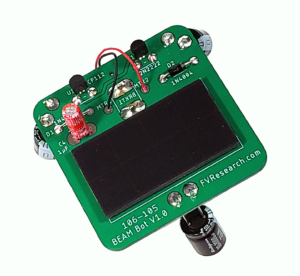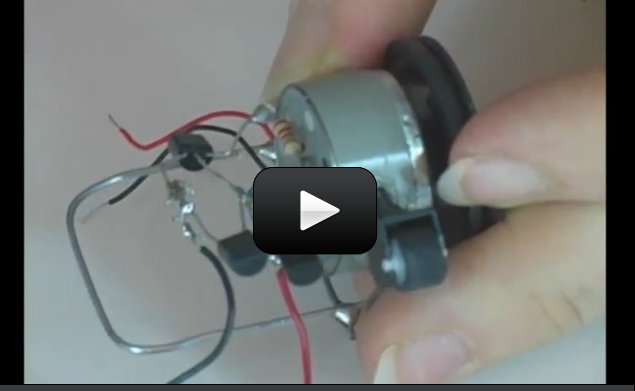Note: Brian Cox has created a BEAM Bot kit as an alternative BEAM project.
Brian's BEAM BOT is modeled after small BEAM projects where parts are soldered to each other, but such projects can be difficult to solder.
small BEAM projects where parts are soldered to each other, but such projects can be difficult to solder.
BEAM Bot uses a standard Printed Circuit Board (PCB) as the frame thus making it easier to assemble.
You can order Brian's BEAM Bot Kit here: fvresearch.com/product/beam-bot .
Click here for Brian's BEAM Bot instructional video (which can be found under Unit 25).
This project is for advanced students.This is one of the coolest applications of renewable energy to come about in recent years. BEAM stands for Biology, Electronics, Aesthetics, and Mechanics. It basically refers to a class of robots that instead of having complicated brains, rely on nervous-system type of sensors to interact with their world.
Some BEAM robots skitter, dance, flash, jump, roll, or walk, and most are solar powered. The result is a fast responding robot made of old cell phone parts that can fit inside your hand. We'll be making a few different types so you can get a good handle on this type of programming-free, battery-free robotics.


You will want to use rosin-core solder intended for electronics. The most common electronics solder is called “60/40”. It is 60% tin and 60% tin. You could also use lead free solder, but it requires a higher temperature.
What kind of solder do you use?